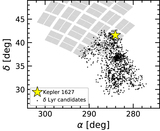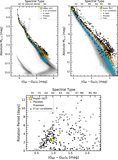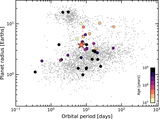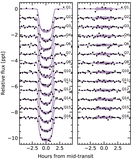Image Details
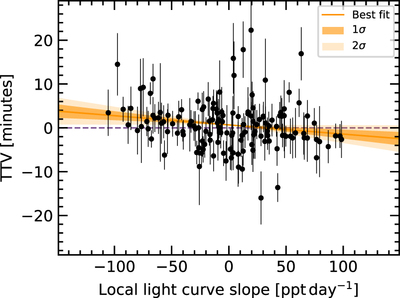
Caption: Figure 7.
Weak evidence for a prograde orbit of Kepler 1627Ab. The time of each Kepler transit was measured, along with the local slope of the light curve. The two quantities might be anticorrelated (≈2σ), which could be caused by starspot crossings during the first (second) half of transit inducing a positive (negative) TTV, provided that the orbit is prograde (Mazeh et al. 2015). The units along the abscissa can be understood by considering that the stellar flux changes by ∼60 ppt per half rotation period (∼1.3 days).
Copyright and Terms & Conditions
© 2022. The Author(s). Published by the American Astronomical Society.



